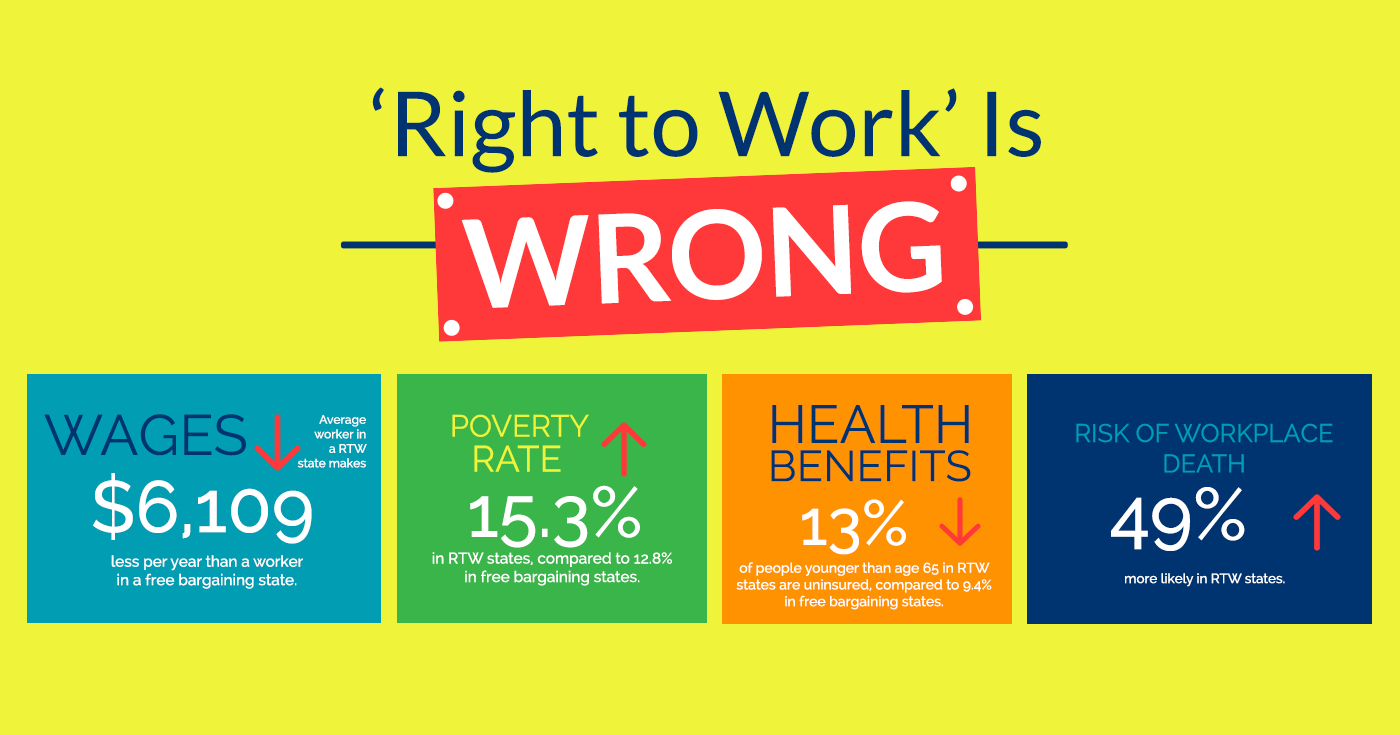So-called “right to work” laws – intentionally misnamed by a network of nonunion business interests that have championed their passage – are currently in effect in 24 states. A more accurate name for these measures is “right-to-work-for-less,” because in practice, they have lowered wages, reduced benefits, diminished jobsite safety, and do not guarantee any “rights” that are not already offered under federal law. The average worker in a right to work for less state earns roughly $5,333 a year less than a worker in free-bargaining states.
In addition, states with so-called “right-to-work” laws are:
- More likely to be uninsured
- More likely to have higher poverty and infant mortality rates
- Have a higher rate of workplace deaths, 36% higher than other states
- Spending $3,392 less per pupil in elementary and secondary education
